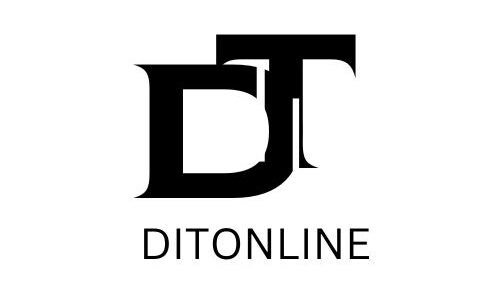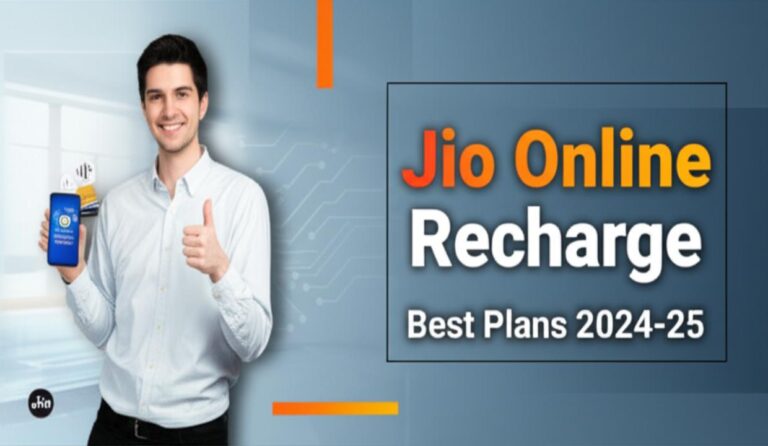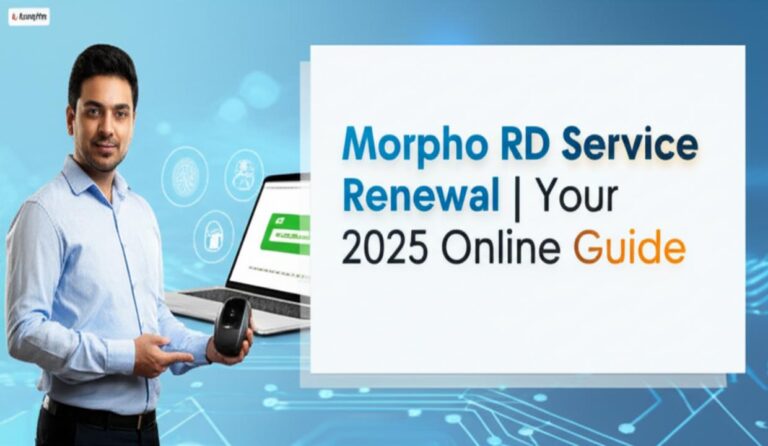Metro Card Recharge Online 2025: Your Ultimate Guide to Easy Top-Ups
Hello! Welcome to ditonline, your trusted source for digital recharge and tech updates.
In our fast-paced modern world, the convenience of managing daily essentials from the comfort of your home or on the go has become paramount. Gone are the days of rushing to a physical store or waiting in long queues to top up your mobile, renew your DTH subscription, or pay utility bills. Online recharge has revolutionized how we interact with various services, making life simpler and significantly more efficient. This seamless digital transformation extends across virtually every facet of our lives, from communication services to crucial urban transportation systems. It’s about empowering you with control and saving your valuable time, ensuring you stay connected and keep moving without interruption. Whether it’s for your personal mobile, a family member’s data pack, or ensuring your favorite show stays on air, digital payment methods provide instant solutions. This guide delves into the world of online top-ups, specifically highlighting how easily you can manage your metro travel, a vital part of urban commuting for millions.
| Recharge Category | Description | Key Benefits |
|---|---|---|
| Mobile Recharge | Top up prepaid mobile plans, data packs, and talk time. | Instant activation, varied plans, convenience for family members. |
| DTH Recharge | Renew satellite TV subscriptions for uninterrupted entertainment. | Immediate service restoration, easy package modifications. |
| Data Card Recharge | Add data to portable internet devices or dongles. | Stay connected on the go, flexible data options. |
| Electricity Bill | Pay monthly electricity bills online. | Avoid late fees, track consumption, environmental benefit. |
| Broadband Recharge | Renew internet service provider subscriptions. | Maintain uninterrupted home or office internet access. |
Embracing the Digital Frontier: Why Online Recharge Matters
The journey towards a fully digital ecosystem is accelerating, and nowhere is this more evident than in the realm of public transportation. For millions of commuters, the humble metro card has been an indispensable tool, but its era is drawing to a close in many major cities. The Metropolitan Transportation Authority (MTA) in New York City, for instance, has officially announced the phased discontinuation of the traditional MetroCard. Sales and distribution are set to cease by December 31, 2025, marking a significant transition towards advanced, contactless fare systems. This shift is not merely about replacing plastic cards; it represents a fundamental rethinking of urban mobility, aiming for greater efficiency, convenience, and sustainability. While MetroCard usage will continue temporarily into early 2026, with provisions for balance transfers and reimbursements, the future of urban transit is undoubtedly digital. This move reflects a broader global trend where cities are increasingly adopting tap-and-go technologies, offering riders more flexible and user-friendly ways to pay for their journeys. It’s an exciting time to be a commuter, as technology reshapes our daily travels.
How Online Metro Card Recharge Works: A Glimpse into Seamless Travel
Understanding how online metro card recharge functions is key to leveraging its benefits. While traditional metro cards often required a physical top-up at stations, modern systems, exemplified by New York City’s OMNY (One Metro New York), operate differently. For OMNY card users, the process is straightforward: you can easily recharge your OMNY card or any linked digital device through the official MTA OMNY website or its dedicated mobile application. Payments are flexible, accepting major credit/debit cards and popular digital wallets like Apple Pay and Google Pay. Imagine you’re running late for work; a quick tap on your phone or a few clicks online ensures your travel funds are ready, eliminating any last-minute stress. Moreover, many platforms offer automatic reload options, linking directly to your bank card for ultimate convenience. This means your travel funds never run out unexpectedly, guaranteeing smooth journeys every time you step into the metro. Even with this digital push, physical reload options for OMNY cards remain available at dedicated vending machines found across all 472 NYC subway stations and at various authorized retail outlets, ensuring accessibility for all users.
The true innovation lies in contactless payment. With OMNY, there’s often no need for a prior “recharge” in the traditional sense. Instead, users simply tap their Apple Pay, Google Pay, or a contactless credit/debit card directly on the OMNY reader at the turnstile. Funds are deducted post-ride, much like a debit transaction. This “tap-and-go” method eliminates the need to pre-load a specific amount, simplifying the payment process significantly. For example, if you typically take the metro only a few times a week, you don’t have to worry about buying a weekly pass in advance. The system smartly tracks your rides and ensures you never overpay, thanks to its clever fare capping mechanism.
Popular Platforms for Your Digital Top-Ups and Metro Cards
The landscape of online recharge is vast, encompassing a variety of platforms designed to make your life easier. For metro transit specifically, the official channels are always the most reliable. In New York, the MTA OMNY website and its corresponding mobile application are the primary portals for managing your OMNY card or linked payment methods. These platforms offer a secure environment to check your balance, view ride history, and set up automatic reloads. They are meticulously designed to provide a seamless user experience, ensuring that even first-time users can navigate them with ease. Beyond dedicated transit systems, many other digital services benefit from a similar ecosystem of official portals and widely recognized third-party aggregators. For example, if you need to perform a general mobile recharge for a family member, platforms like Google Pay, Paytm, or PhonePe are incredibly popular. These apps consolidate various services, allowing you to top up mobile phones, pay DTH bills, and even settle electricity charges all from one interface. They integrate diverse payment methods, including UPI, net banking, and various digital wallets, making transactions incredibly flexible and quick. When choosing a platform, always prioritize those that are official or have a strong reputation for security and customer support to ensure your financial details are protected. These platforms often come with intuitive interfaces and clear instructions, guiding you through each step of the recharge process.
Ensuring Security in Your Online Transactions
When dealing with any form of online recharge, especially for sensitive services like metro travel or bill payments, security is paramount. Official platforms like the MTA OMNY website and app employ robust security measures to protect your financial data. This typically includes advanced encryption protocols, such as SSL/TLS, which scramble your information during transmission, making it unreadable to unauthorized parties. Furthermore, these platforms often adhere to stringent industry standards like PCI DSS (Payment Card Industry Data Security Standard) for handling credit and debit card information. This means your card details are processed and stored in an environment that meets the highest security requirements. For users, several best practices can further enhance transaction security. Always ensure you are on the official website or using the authentic app, checking for ‘https://’ in the URL and the padlock icon in your browser. Using strong, unique passwords for your accounts and enabling two-factor authentication (2FA) adds an extra layer of protection, requiring a second verification method, like a code from your phone, to log in. It is also advisable to avoid performing sensitive transactions over public or unsecured Wi-Fi networks, as these can be vulnerable to eavesdropping. Regularly monitoring your bank statements for any suspicious activity provides an early warning system against potential fraud. By combining robust platform security with vigilant user habits, you can confidently enjoy the convenience of digital payments, knowing your information is safe.
Benefits of Embracing Digital Metro Card Payments
The shift towards digital metro card payments brings a cascade of benefits, transforming the daily commute into a more efficient and pleasant experience. Perhaps the most significant advantage is unparalleled convenience. Imagine you’re at the subway station, realizing your card balance is low. Instead of hunting for a vending machine or waiting in line, a few taps on your smartphone are all it takes to top up, or even better, simply use your contactless debit card. This eliminates physical barriers and allows you to manage your travel funds anytime, anywhere. Beyond convenience, there are substantial financial advantages. The introduction of fare capping with contactless systems like OMNY automatically rewards frequent riders. For instance, in NYC, full-fare riders are capped at $34 per week, and reduced-fare riders at $17. Once this threshold is reached, all subsequent rides for the remainder of the week are free. This innovative system reportedly provides customers with over $8 million worth of free trips every month and saves an impressive $40 million annually by reducing unused prepaid fares on weekly or monthly MetroCards. This means you only pay for what you use up to a certain limit, offering incredible value and predictability in your travel expenses. From an operational standpoint, the MTA projects at least $20 million in annual savings by discontinuing MetroCard production, maintenance, and cash handling. The estimated total savings across Metro operations for FY2025 are a staggering $120 million, combining these efficiencies with service optimizations. This not only benefits the transit authority but also potentially allows for reinvestment into improving services. Finally, the environmental impact is positive, reducing the reliance on plastic cards and paper tickets, contributing to greener urban environments. Digital payments are truly a win-win for commuters and transit operators alike.
Understanding the Limitations and Hurdles
While the transition to online metro card recharge and digital payments offers numerous advantages, it also comes with certain limitations and challenges that need careful consideration. One of the most prominent hurdles is internet dependency. For any online transaction, a stable internet connection is absolutely essential. If you find yourself in an area with poor signal, or if your mobile data runs out, recharging your metro card or making a payment digitally becomes impossible. This can be particularly frustrating when you’re rushing to catch a train and connectivity fails. Another significant challenge is addressing the digital divide. While a large portion of the population readily adopts new technologies, a substantial segment still prefers or relies on traditional payment methods. The example of Nagpur Metro in India highlights this perfectly; despite a significant shift to digital payments, cash payments still constituted 43% of transactions by September 2025. This indicates that a considerable portion of the general public, including the elderly or those with limited access to smartphones or banking services, might find the fully digital system intimidating or inaccessible. The learning curve for new systems like OMNY can also be a barrier. Users accustomed to the simplicity of swiping a MetroCard might need time and support to adapt to tapping a phone or a contactless card. Technical glitches, though infrequent on robust platforms, can occasionally disrupt service, leading to temporary inconvenience. Even with stringent security measures, some individuals harbor lingering security concerns about sharing financial information online, making them hesitant to fully embrace digital payment methods. Addressing these limitations effectively is crucial for a truly inclusive and successful digital transition.
Pricing, Offers, and the Value of Fare Capping
When it comes to online metro card recharge and digital payments, understanding the pricing structure and available offers is vital for maximizing value. For systems like OMNY, the primary “offer” is deeply integrated into its design through a highly beneficial feature: fare capping. Unlike traditional passes where you pay a fixed amount upfront for a week or month, OMNY automatically tracks your rides over a seven-day period. Once your total expenditure reaches the equivalent of a 7-day unlimited pass ($34 for full fare or $17 for reduced fare in NYC), all subsequent rides for the rest of that week become absolutely free. This intelligent system ensures you never pay more than the cost of a weekly pass, even if you only decide to ride frequently for a few days. It’s a spontaneous saving mechanism that removes the guesswork and risk associated with purchasing passes in advance, especially if your travel patterns are inconsistent. For instance, if you commute four days a week but then decide to explore the city extensively on the weekend, OMNY ensures those extra weekend trips don’t cost you anything beyond your weekly cap. This eliminates “fare leakage” – the money lost on unused portions of prepaid passes – a benefit that reportedly saves commuters millions annually. While traditional “offers” like discounts on recharge amounts might be less common for official transit systems focused on regulated fares, the inherent value of fare capping serves as a powerful incentive for commuters to embrace the digital system. For other types of online recharge, such as mobile or DTH, platforms often provide cashback offers, loyalty points, or bundled discounts, making digital top-ups even more attractive. Always check the platform for ongoing promotions to get the best value.
Availability: Where and How You Can Recharge Your Metro Card
The widespread availability of online metro card recharge methods underscores the commitment to a seamless urban transit experience. For OMNY users in New York City, accessing these services is designed to be effortlessly convenient. The official OMNY website and its user-friendly mobile app are your primary digital hubs, accessible from any internet-connected device, whether you’re at home, at work, or even just waiting for your train. These platforms allow you to manage your OMNY account, link payment methods, and monitor your travel history with ease. Beyond the digital realm, physical options are still plentiful to ensure no one is left behind in the transition. You can recharge OMNY cards or receive assistance at any of the OMNY vending machines located strategically across all 472 subway stations in NYC. Additionally, select retail outlets throughout the city also serve as points for physical reloads, offering an accessible alternative for those who prefer in-person transactions or require cash options. This multi-channel approach ensures that every commuter, regardless of their technological proficiency or preference, can effortlessly participate in the new digital transit system. This trend of pervasive availability isn’t unique to New York; cities globally are adopting similar strategies. The Nagpur Metro in India, for instance, has seen nearly 60% of its riders switch to digital payments, including its Maha Card, UPI, and even WhatsApp ticketing, demonstrating a broad acceptance of diverse digital options. This global push towards varied and accessible online recharge methods highlights a clear direction for urban transit: convenience and widespread availability are key to successful adoption.
The Future is Now: Pros and Cons of Digital Recharge
Embracing online recharge, particularly for essential services like metro travel, brings a host of advantages that align with modern lifestyles. However, like any technological shift, it’s important to acknowledge potential drawbacks.
| Pros | Cons |
|---|---|
| Convenience: Recharge anytime, anywhere without visiting a store. | Internet Dependency: Recharge fails without a stable connection. |
| Speed & Efficiency: Instant top-ups and bill payments, no queues. | Digital Divide: Excludes users without internet, smartphones, or digital literacy. |
| Cost Savings: Benefits like fare capping save money for frequent travelers. | Security Concerns: Perceived risks of online transactions, though robust systems are in place. |
| Transparency: Easy access to transaction history and usage patterns. | Technical Glitches: Occasional system downtimes or errors can disrupt service. |
| Environmental Impact: Reduces reliance on physical cards and paper tickets. | Learning Curve: New systems may require adaptation for some users. |
Frequently Asked Questions About Online Recharge
How do I know if my OMNY card recharge was successful?
After you complete an online recharge for your OMNY card via the official MTA website or app, you will typically receive an instant confirmation on screen. Additionally, a confirmation email or SMS will be sent to your registered contact details. You can also log into your OMNY account to view your updated balance and transaction history, ensuring your funds are ready for your next trip. This immediate feedback provides peace of mind.
Why is MTA phasing out the MetroCard in favor of OMNY?
The MTA is phasing out the MetroCard to transition to a more modern, efficient, and cost-effective fare payment system. OMNY offers enhanced convenience through contactless tap-and-go payments, fare capping benefits for riders, and significant operational savings for the MTA by eliminating the need for physical card production and maintenance. It’s part of a global trend towards digital transformation in public transit, improving the overall commuting experience for everyone.
What exactly is fare capping, and how does it benefit me?
Fare capping is a smart feature in systems like OMNY where you pay per ride, but your total spending for a specific period (e.g., a week) is limited. Once you reach the maximum fare amount for that period (the “cap”), all subsequent rides within that timeframe become free. This means you get the flexibility of paying per ride but also enjoy the savings of an unlimited pass without having to buy one upfront. It’s a huge benefit for managing travel costs.
Can I still use cash to pay for my metro travel?
While the focus is strongly on digital payments, many transit systems, including NYC’s OMNY, still offer options for cash payments. For OMNY, you can purchase and reload OMNY cards using cash at vending machines located in all subway stations or at select retail locations across the city. This ensures that options remain available for those who prefer or need to use cash, bridging the gap during the transition to a fully digital future.
Concluding Thoughts on Your Digital Journey
As we navigate through 2025 and beyond, the move towards online recharge and digital payment systems for services like metro travel is not just a convenience; it’s an evolution. The proactive steps taken by transit authorities like the MTA to transition from the traditional MetroCard to sophisticated contactless solutions like OMNY are clear indicators of this inevitable shift. Embracing these digital methods empowers you with flexibility, efficiency, and often, significant cost savings through features like fare capping. While acknowledging the transitional challenges and the need to ensure inclusivity, the benefits of instant top-ups, secure transactions, and reduced environmental impact are undeniable. Whether it’s for your daily commute, ensuring your mobile stays connected, or keeping your home entertained, digital recharge simplifies life. By staying informed and utilizing the various platforms available, you can effortlessly manage your essential services, making your daily routines smoother and more modern. The future of payments is here, and it’s digital, seamless, and always at your fingertips.
Total Word Count: 1289







